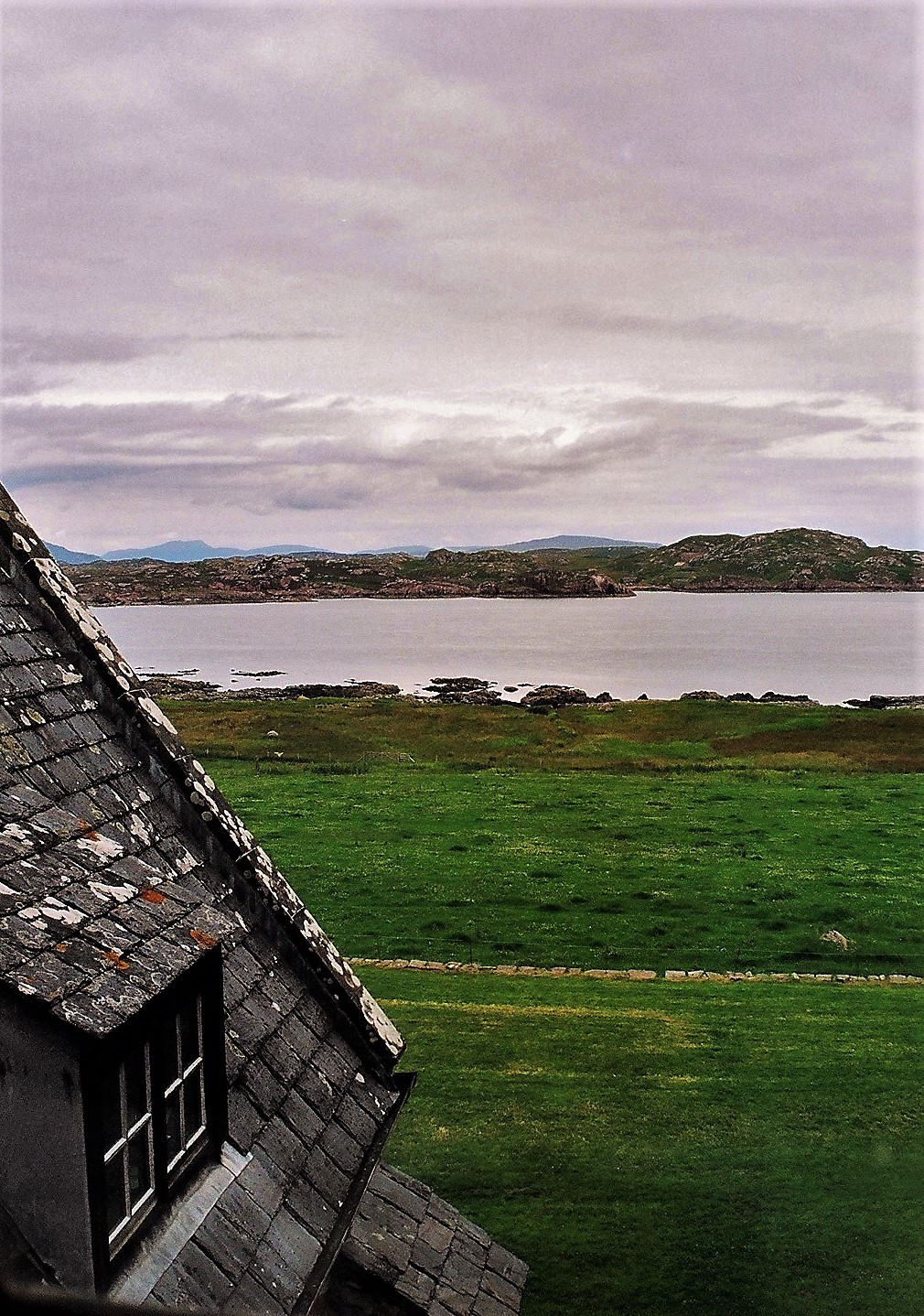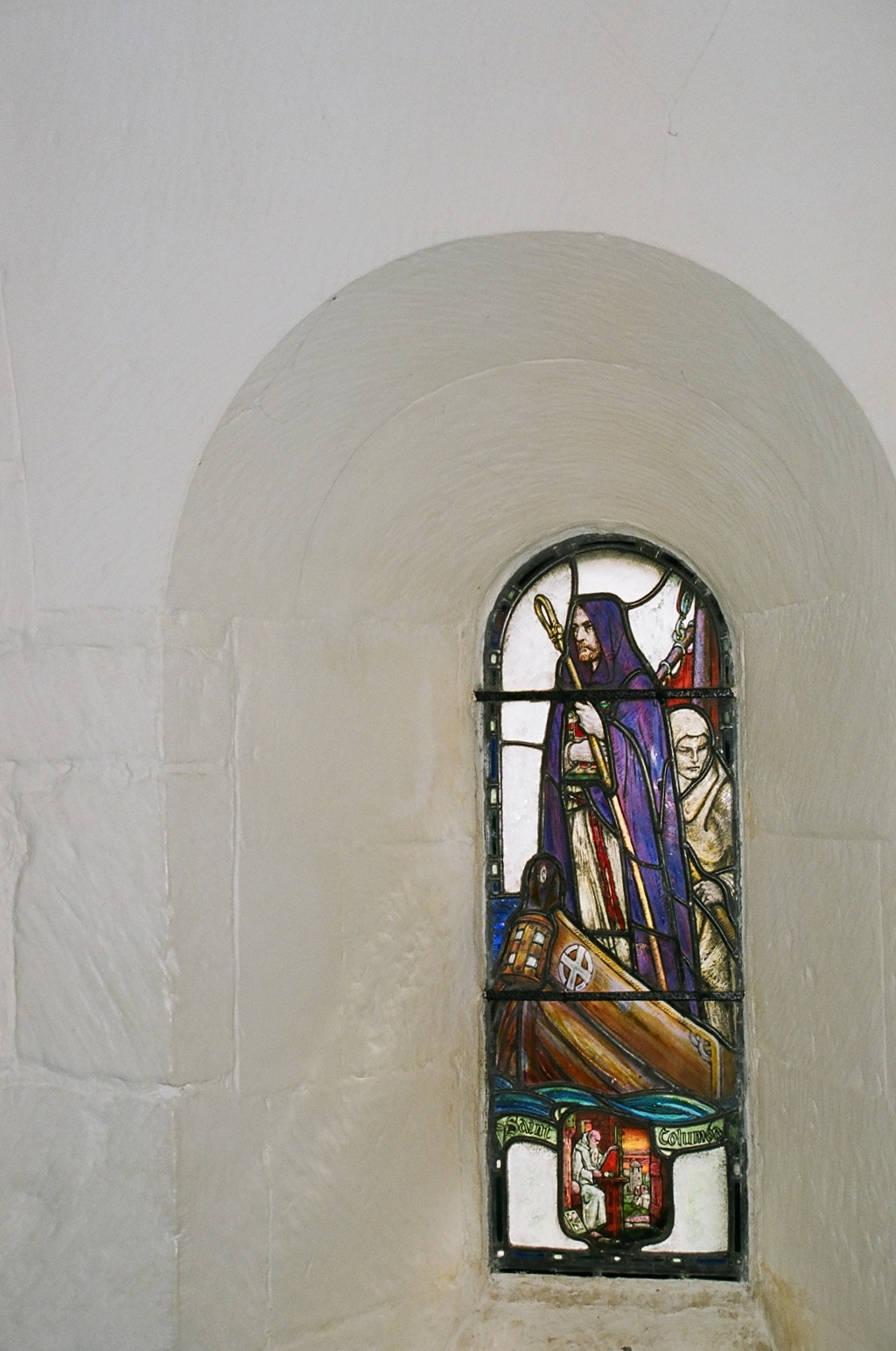{We are almost halfway there…that is, day 19 of our 40 day journey in Lent 2021. I am posting pictures and descriptions of church sanctuaries, noting that due to the pandemic many of us miss being present in such places set apart for worship, devotion, and prayer.}

Here is the Iona Abbey Church on the Isle of Iona in Scotland. The Celts refer to this whole island as a “thin place,” one of those too rare locations where the spiritual and physical realms touch, or blend, as if separated only by the most fragile veil. When one has a pilgrimage at Iona, one understands.
We spent a week at Iona, staying in the Abbey proper, hiking the weekly day-long “pilgrimage” around the island, worshipping in this medieval church, going to daily programs (akin to a continuing education course), and learning the songs of the Wild Goose Music Group. We ate the simple and very healthy meals in the refectory, and did our assigned chores without complaint. I shot video of the pilgrimage, something I really should put up on YouTube. We’ll see about that.
There is a resident community at the Abbey, as well as visitors who sign on for short lengths of time to live on the grounds and take part in the shared life there. Of course, there are also tourists who stop by for informal tours of the Abbey and the beautiful isle itself. It was St. Columba who came to the island in 563 A.D. to found a Christian community. The full history of Iona Abbey is worth an on-line search, and I won’t go into that here, except to note that the Abbey Church I photographed during our stay dates from the 13th century. (And it is thought that the Book of Kells originated in the Iona community.)
Here’s what I found especially impressive about worship in this space. First, there is the history. Look where we are. Look what has led us here. We are very aware of the dedication of those who have revitalized the crumbling Abbey into a vital, living and breathing faith community. (I keep using that ‘c’ word, but looking at synonyms for community isn’t helpful. Sect? Fellowship? Cult? Society? No.) And in the midst of that long heritage, there are the contemporary songs of Iona, the prayers focused on the here-and-now, and leadership shared by clergy and laity of various traditions.
During the week, one service centers on healing, another on justice and peace. The Iona Community believes that prayer and politics belong together as do confession (because we all play a part in the injustices of the world) and commitment to action. To that end, there is a service of commitment too, with the explanation coming from the Iona Abbey Worship Book:
…the call to commitment to Jesus is at the same time a call to commitment to all that Jesus identifies himself with…to the brothers and sisters throughout the world who journey with Jesus…a commitment to the suffering and poor of the world with whom Jesus inseparably identified himself…to caring for the earth, sea and sky which God called into being through the Word.
That worship time can never be seen as separate from the rest of the Iona journey. There’s a thin place between the worship offered in that sacred space and the servanthood offered in our life away from Iona. As the songs we sing linger in our memories and our hearts (so singable!), the words remind us wherever we go beyond the Abbey that Christ goes with us, pushes us, pulls us, walks beside us, points us toward places of ministry.
This closing prayer comes from Celtic Prayers from Iona, by J. Philip Newell:
Bless to me, O God the earth beneath my feet. Bless to me, O God the path on which I go. Bless to me, O God the people whom I meet. O God of all gods, bless to me my life.
 I’m writing about isn’t the one in view in the lower left. It’s the window through which I’m looking. Which probably looks just like the one at the lower left. Both windows, the seen and the unseen, look out from the Iona Abbey. Iona is a tiny island off the southwest coast of Mull in the Inner Hebrides. It’s known as the “cradle of Christianity in Scotland.”
I’m writing about isn’t the one in view in the lower left. It’s the window through which I’m looking. Which probably looks just like the one at the lower left. Both windows, the seen and the unseen, look out from the Iona Abbey. Iona is a tiny island off the southwest coast of Mull in the Inner Hebrides. It’s known as the “cradle of Christianity in Scotland.”